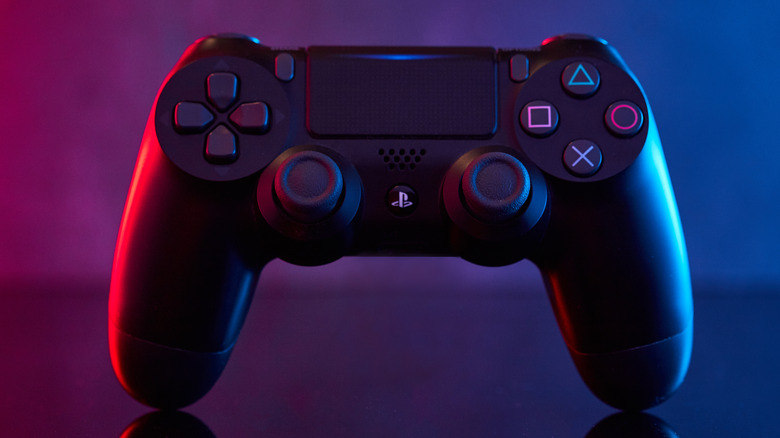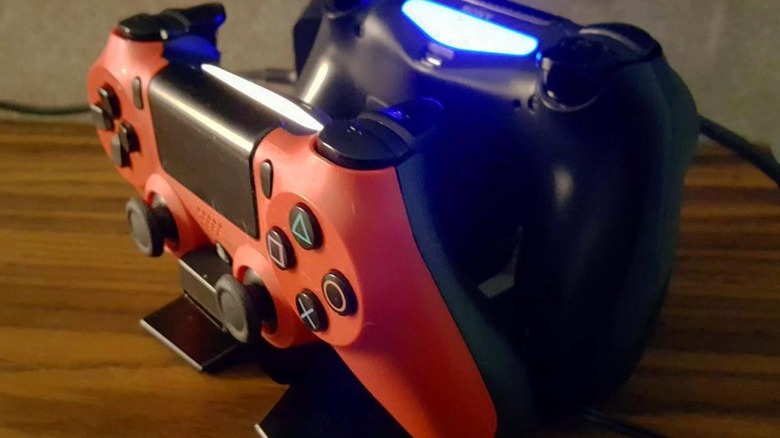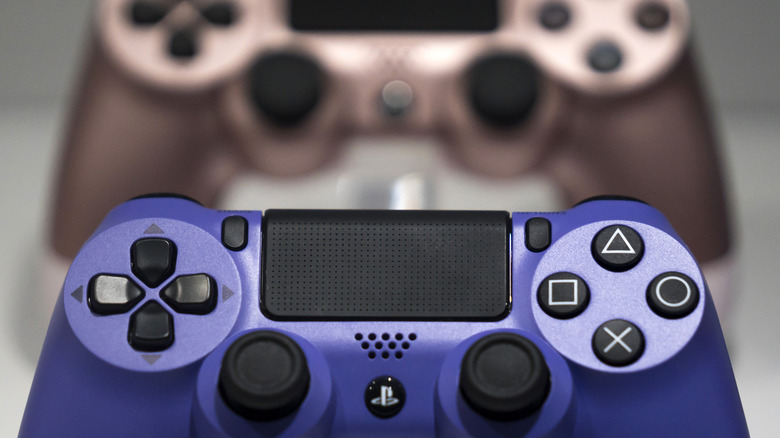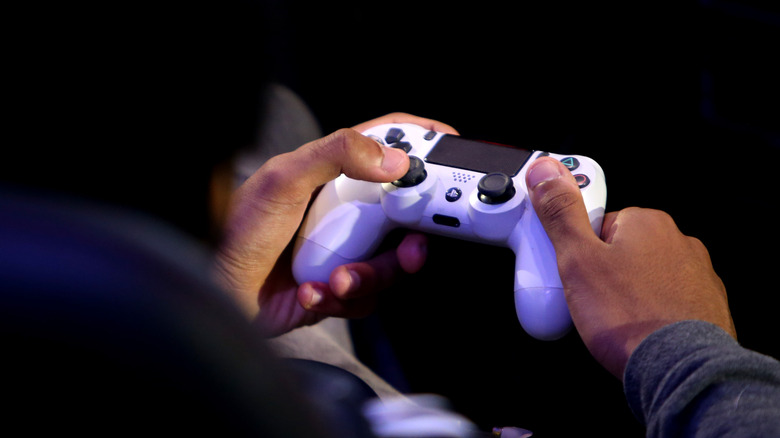Fixing A PS4 Controller That Won't Connect Or Charge
If you're reading this, you've probably experienced an issue from which many PS4 owners have suffered: one moment your DualShock 4 controller is working fine, the next moment it appears completely dead. No lights will turn on, USB charging doesn't work, resetting the controller doesn't work. It seems that it has completely died, and no matter how many troubleshooting guides you follow, nothing fixes it. Fortunately, there's a solution.
I'm aware of this issue because it has affected me ... three times. The first time was less than three months after I bought the console — the controller that came with it completely died, and after a day of troubleshooting failed to fix it, I bought a new controller (since I needed two). Then three months later, that second controller spontaneously died.
Finally, a couple months after that — you guessed it — the third controller worked, then I pushed the PS button to turn it on and it didn't work. Nothing happened. It appeared entirely dead. I tried using the reset button, tried different variations of resetting, plugging in, and turning on the PlayStation. But nothing worked. I had three expensive, seemingly dead controllers.
Here's the thing, though: while attempting to connect to a pair of Bluetooth headphones, I noticed that a "PlayStation Controller" was listed in the BT drop-down menu on my Mac. That meant that while the controller appeared dead, there was some charge left and it was still broadcasting for a connection.
That led to hours of retrying every troubleshooting guide I could find. I contacted Sony and they eventually said to just send the controllers in for replacement. But one last-ditch effort — the last one I would try — actually worked.
The solution
If your controller suddenly and inexplicably seems 100% dead — no lights, no connection — then you likely have a USB issue. For reasons that aren't clear, these DS4 controllers appear to lose their ability to charge via USB after some length of time and won't even acknowledge when a cable is plugged in.
To get around this, you need to buy a PS4 controller charging station, the kind that charges through the ports on the bottom of the controller rather than through USB. These cost $15 to $25 depending on whether you get the official one or a third-party station.
I put the "dead" controllers on the charging station, and they immediately lit up and began charging like normal. All three "dead" controllers were resurrected and are now totally functional ... as long as the charging station is used.
Other troubleshooting
But what if that doesn't work? There is a second issue which is more ordinary in nature: If you still see lights but the controller doesn't do anything, you've lost connection with the PS4 and need to pair the controller. The easiest way to do this is by pressing the reset button on the bottom near the L2 button.
Alternatively, you can power off the PlayStation 4, then press the controller reset button. After that, plug in the USB cable (the controller to the console), then turn the PS4 on. When the blue light starts flashing on the console, press the PS button on the controller. It should pair with the console and go back to working like usual.
If neither of those methods work for you, try this one:
1. Press and hold the PS and Share buttons simultaneously.
2. Wait until the light on the controller starts flashing.
3. Release the buttons. This essentially does the same thing as pressing the reset button, but is easier.
4. Plug the controller into the PS4 using a USB cable if it doesn't automatically show up on the PS4.
If this doesn't work, try a different cable — it is possible you're using one that can't support the kind of connection you need to make with the PS4, which causes the issue. Be sure to try the other USB port on the console in the off chance one of them is damaged.
Could the battery be the problem?
Is the controller still not working? Answer these question: How old is the controller? and Is it under warranty?
If the controller is old, you may have a battery that can no longer properly hold a charge and is causing issues because of that. If the controller isn't covered by a warranty, your best option is to open it up, manually remove the battery, and replace it with a new battery. You can find a bunch of them on Amazon and eBay. Anyone with basic DIY skills should be able to do this.
Alternatively? If you have a warranty and everything above has failed, you should return the controller for a new one, as it is probably fairly new and has some sort of defect.



